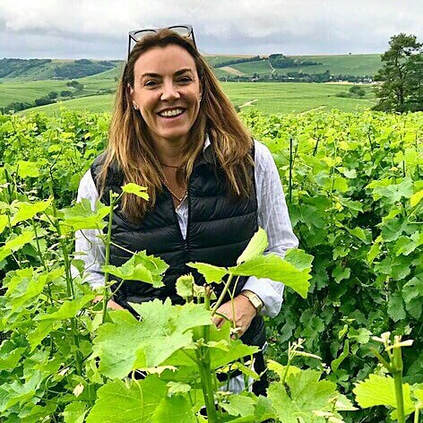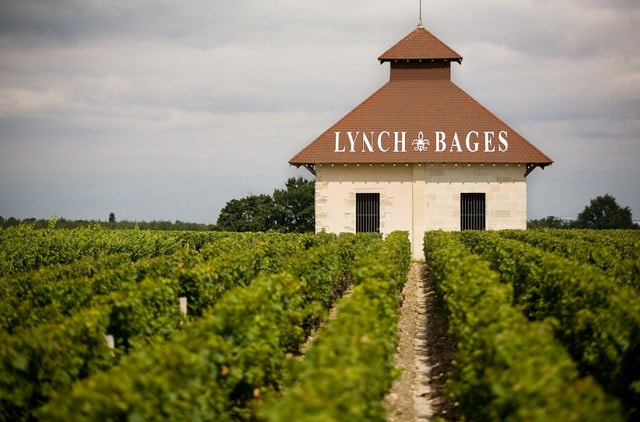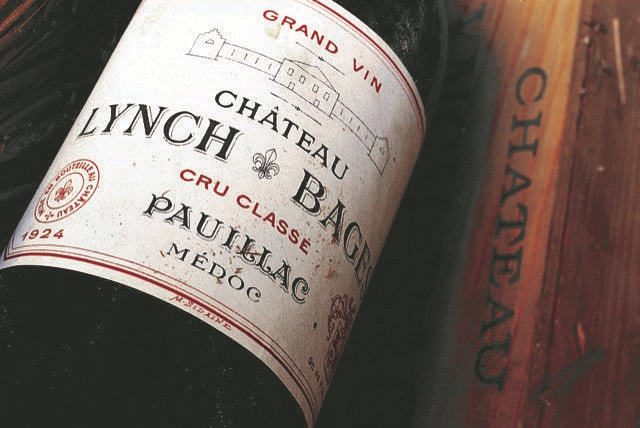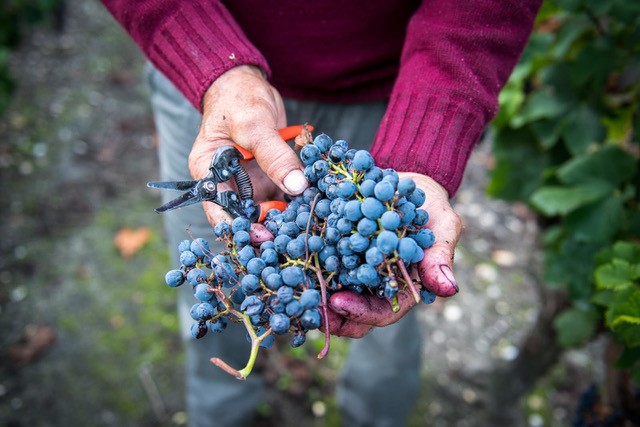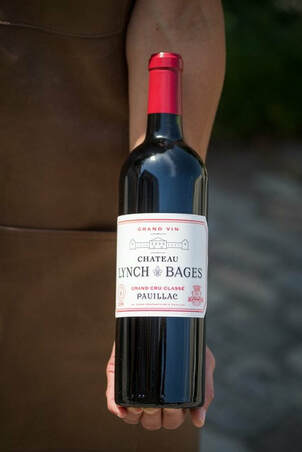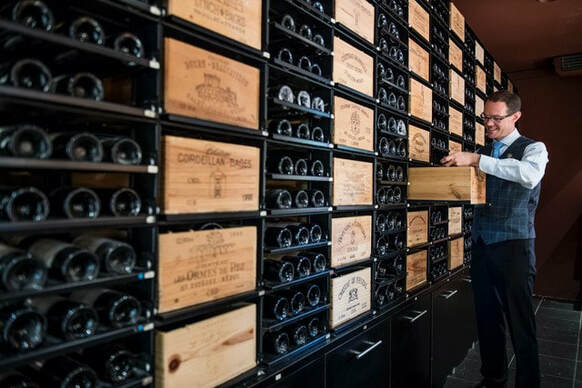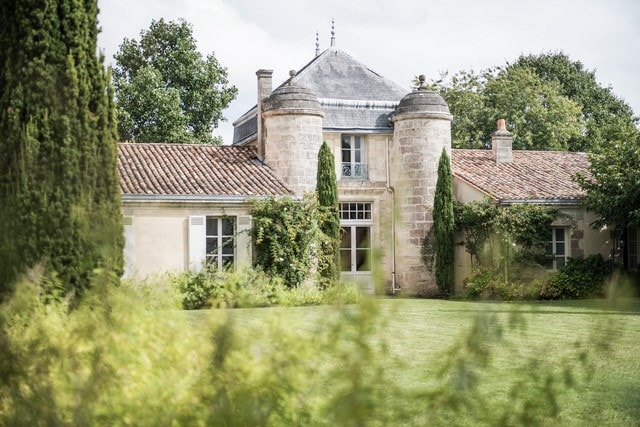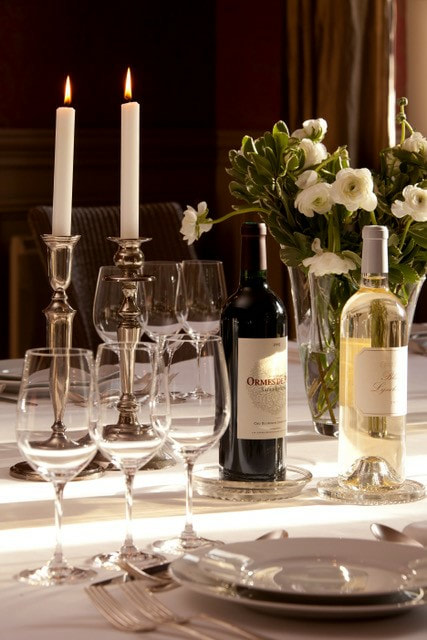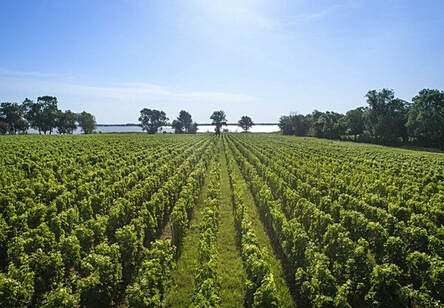- Home
-
EAT OUT
-
INTERVIEWS
- Christine Vernay - Owner-Winegrower, Domaine Georges Vernay >
- Christophe Dufossé - Owner and Chef at Maison Dufossé, Metz, France >
- Eunji Lee - Executive Pastry Chef at Jungsik NY
- Dan Leiber - Owner of Stardust Farm. PA
- Kinou Cazes-Hachemian Co-Owner and North America Brand Ambassador for Château Lynch-Bages
- Eddy Leroux - Chef de Cuisine at Daniel, NYC
- Etienne Le Bastard Executive Pastry Chef at Bouley, NYC
- Matt Lambert - Head Chef and Co-Owner of The Musket Room, NYC
- Joe Anthony - Chef de Cuisine at Gabriel Kreuther, NY
- Aurélie Bessière - Founder and CEO of Palais des Thés USA
- Daniel Chavez-Bello Executive R&D Chef at Bouley, NYC
- Laurent Drouhin from Joseph Drouhin Wines
- Estelle Lebbrecht from Estelle Gourmet
-
NEWS
- The 2021 List of NYC & Westchester County's Michelin-starred restaurants
- 14th Annual StarChefs International Chefs Congress
- The 2020 List of NYC & Westchester County's Michelin-starred restaurants
- The 2019 World’s 50 Best Restaurants List
- The 2019 James Beard Foundation Awards Nominees
- The World Restaurant Awards 2019
- The 2019 List of NYC's Michelin-starred restaurants
-
RECIPES
- About
- CONCIERGE
Château Lynch-Bages is a wine estate in the Pauillac appellation, located in the Médoc, on the left bank of the Gironde estuary, 1 hour North of Bordeaux.
It is also one of the 18 Grands Crus Classés of Pauillac according to the Bordeaux Wine Official Classification of 1855. Château Lynch-Bages is known for combining structure and elegance, offering great aromas and character in its youth and developing deeper complexity when aging.
Originally workers from Ariège in southwest France, the Cazes Family left the mountains to arrive in Médoc in 1875.
In the 30’s, right in the middle of the Great Depression, Jean-Charles Cazes, originally a baker in Pauillac, was put in charge of the management of the Lynch-Bages vineyard as a tenant farmer. Thanks to his work, he became greatly respected and was finally able to purchase the Lynch-Bages property in 1939.
Since then, Lynch-Bages has been successfully run by the Cazes family, who today, in addition to Lynch-Bages also owns several other estates* in Bordeaux as well as in other regions of France and in Portugal.
Kinou Cazes-Hachemian lives in New York with her husband and 3 daughters. She is responsible for representing Lynch-Bages and the wines from the Cazes family estates throughout North America.
A few days ago, she welcomed me into her home and kindly answered some questions.
Of course, we spoke about wine, but also about her family story which is fascinating.
Among other things, she explained how her father Jean-Michel Cazes has played a great part in the modernization of the winery and the expansion of the family to other estates, but also in the development of oenotourism in Médoc.
Thanks to him and his vision, Lynch-Bages has been home to Cordeillan-Bages since 1989. It is a beautiful Relais & Châteaux** nestled in the heart of the vineyard, where the Cazes family shares its passion for wine and gastronomy with visitors coming from all over the world.
Talking with Kinou, I could feel all the passion and dedication that has animated her family all these years. That afternoon, I completely lost track of the time and was transported into a journey through time in the beautiful wine country of Médoc.
It is also one of the 18 Grands Crus Classés of Pauillac according to the Bordeaux Wine Official Classification of 1855. Château Lynch-Bages is known for combining structure and elegance, offering great aromas and character in its youth and developing deeper complexity when aging.
Originally workers from Ariège in southwest France, the Cazes Family left the mountains to arrive in Médoc in 1875.
In the 30’s, right in the middle of the Great Depression, Jean-Charles Cazes, originally a baker in Pauillac, was put in charge of the management of the Lynch-Bages vineyard as a tenant farmer. Thanks to his work, he became greatly respected and was finally able to purchase the Lynch-Bages property in 1939.
Since then, Lynch-Bages has been successfully run by the Cazes family, who today, in addition to Lynch-Bages also owns several other estates* in Bordeaux as well as in other regions of France and in Portugal.
Kinou Cazes-Hachemian lives in New York with her husband and 3 daughters. She is responsible for representing Lynch-Bages and the wines from the Cazes family estates throughout North America.
A few days ago, she welcomed me into her home and kindly answered some questions.
Of course, we spoke about wine, but also about her family story which is fascinating.
Among other things, she explained how her father Jean-Michel Cazes has played a great part in the modernization of the winery and the expansion of the family to other estates, but also in the development of oenotourism in Médoc.
Thanks to him and his vision, Lynch-Bages has been home to Cordeillan-Bages since 1989. It is a beautiful Relais & Châteaux** nestled in the heart of the vineyard, where the Cazes family shares its passion for wine and gastronomy with visitors coming from all over the world.
Talking with Kinou, I could feel all the passion and dedication that has animated her family all these years. That afternoon, I completely lost track of the time and was transported into a journey through time in the beautiful wine country of Médoc.
What was it like to grow up in Pauillac and what memories do you have from your time there?
Pauillac is a very small town in the heart of Médoc. Growing up there made me a true country girl. It gave me a feeling of freedom and I have great memories of being outside most of the time and participating in all the seasonal activities around the winery. People don’t usually think about it this way but the life on a wine estate is pretty similar to the life on a farm. As we are farming grapes, we work with the seasons and each season brings new steps in the care of the vines. I had the opportunity to take part in all these steps and I loved it. I think it was a gift.
People sometimes refer to me as a “Bordelaise” and I always correct them because Bordeaux and Pauillac are very different. I am a true médocaine!
What I treasure most about my childhood is growing up close to my family, my parents obviously, but also my grand-parents and great grand-parents, whom I had the chance to know since they lived well into their nineties.
In the 70’s, the “Château”, was old with none of the modern conveniences. My great grand-mother Andrea lived there and I have great memories of visiting her and eating “Langues de Chat”*** with her. At that time, my parents, my siblings and I lived 1 kilometer away, in “downtown” Pauillac. It was in the 80’s that we moved to Lynch-Bages (which was really more an old house than a château) and started to renovate it.
Pauillac is a very small town in the heart of Médoc. Growing up there made me a true country girl. It gave me a feeling of freedom and I have great memories of being outside most of the time and participating in all the seasonal activities around the winery. People don’t usually think about it this way but the life on a wine estate is pretty similar to the life on a farm. As we are farming grapes, we work with the seasons and each season brings new steps in the care of the vines. I had the opportunity to take part in all these steps and I loved it. I think it was a gift.
People sometimes refer to me as a “Bordelaise” and I always correct them because Bordeaux and Pauillac are very different. I am a true médocaine!
What I treasure most about my childhood is growing up close to my family, my parents obviously, but also my grand-parents and great grand-parents, whom I had the chance to know since they lived well into their nineties.
In the 70’s, the “Château”, was old with none of the modern conveniences. My great grand-mother Andrea lived there and I have great memories of visiting her and eating “Langues de Chat”*** with her. At that time, my parents, my siblings and I lived 1 kilometer away, in “downtown” Pauillac. It was in the 80’s that we moved to Lynch-Bages (which was really more an old house than a château) and started to renovate it.
Pauillac was not always the “wine country” we know today. Can you tell me a little bit about its history?
There are a few important steps in the history of Pauillac. From the 19th century until the 70’s not much really happened in terms of development of the vineyards and the wineries. After the major worldwide economic depression, the late 70’s marked the beginning of the modernization of the wineries.
To tell you how my family got involved in the wine business I have to go back to the 30’s and the Great Depression.
Between 1929 and 1939, 15 out of the 18 Grands Crus Classés of Pauillac**** went bankrupt and changed ownership. This was also the case of Lynch-Bages and Ormes de Pez, our estate in Saint Estèphe, which were bought by my great grand-father Jean-Charles Cazes in the late 30’s. In the late 70’s and early 80’s, the opening of the American market and other international markets greatly benefited the Bordeaux wines, and marked a recovery for our industry. Thanks to this recovery and sales development the owners were finally able to invest in the wineries and start modernizing them.
My father Jean-Michel started his career as an engineer in Paris. He decided to come back to Pauillac to help my grand-father André in 1973 right in the middle of the oil crisis. I was 4 years old when we arrived in Pauillac and I have witnessed the transformation of Lynch-Bages over the years, from an estate which looked and felt more like a farm with its chickens and donkey, to the modern estate we know today. My father saw the need to modernize our installations and in 1975 stopped using the wooden vats which had been used since the late 19th century, and replaced them with temperature controlled stainless steel vats. It marked the start of the modernization at Lynch-Bages and the beginning of a new era with new work methods. Today, following in my father footsteps, my brother Jean-Charles, who is in charge of our operations, is again turning a page. He has launched a very important renovation project of our entire winery under the direction of the famous New York architect Didi Pei. This new chapter started in the fall of 2016 and should be completed by the fall of 2019 just in time for us to vinify our next vintage in the new state of the art facilities.
You seem deeply tied to Pauillac and Cordeillan-Bages. However, after completing your studies in Paris you began your career in advertising. When did you know you wanted to work for the family estate?
I think I always knew I wanted to be involved in the family business one way or another but at the same time, after completing my studies, I was eager to leave and and experience something else.
I was 13 or 14 when I started to work at Lynch-Bages every summer. I participated in the harvest, the bottling, I helped with the tours of the winery and I also helped in the kitchen during the harvest as we were feeding the 200 seasonal workers who worked for us at that time of the year. Lynch-Bages has always been an essential part of me and somehow I always knew I wanted to stay involved even if I didn’t know at that time how that would happen.
After my studies, I started to work in advertising and then for an insurance company which sent me to New York. It was good for me to learn and experience something else, but then, after a while I decided it was time to come back to my roots.
You are responsible for representing Lynch-Bages and the wines from your family estates throughout North America. Can you tell me more about your job?
To fully understand what my job is, you have to understand how the Bordeaux market works. We don’t sell our wines directly to the importers. The producers of Bordeaux sell their wines to the “négociants” in Bordeaux who then sell to importers around the world. As we don’t sell our wines directly to the US, my role is not to sell but to support the people who buy and sell our wines in North America. I don’t really like this word but you could say I am kind of an ambassador for our wines. My role is to help the importers and retailers present our wines and bring them to light. I’m here to tell their story. I think wine is all about emotion and connection. To truly experience a wine, you have to link it to a region, a producer, a story. It enables you to fully understand it and appreciate it in a special way.
To get the full experience, more and more people come to Médoc. Through their visit they can better understand our story, see the vines and visit the winery, and meet the people behind the wines which I think is great.
I love my job! First of all because it’s a privilege for me to represent and speak about what four generations in my family have accomplished and then because I get to meet very interesting people who are eager to taste our wines and know more about their story.
There are a few important steps in the history of Pauillac. From the 19th century until the 70’s not much really happened in terms of development of the vineyards and the wineries. After the major worldwide economic depression, the late 70’s marked the beginning of the modernization of the wineries.
To tell you how my family got involved in the wine business I have to go back to the 30’s and the Great Depression.
Between 1929 and 1939, 15 out of the 18 Grands Crus Classés of Pauillac**** went bankrupt and changed ownership. This was also the case of Lynch-Bages and Ormes de Pez, our estate in Saint Estèphe, which were bought by my great grand-father Jean-Charles Cazes in the late 30’s. In the late 70’s and early 80’s, the opening of the American market and other international markets greatly benefited the Bordeaux wines, and marked a recovery for our industry. Thanks to this recovery and sales development the owners were finally able to invest in the wineries and start modernizing them.
My father Jean-Michel started his career as an engineer in Paris. He decided to come back to Pauillac to help my grand-father André in 1973 right in the middle of the oil crisis. I was 4 years old when we arrived in Pauillac and I have witnessed the transformation of Lynch-Bages over the years, from an estate which looked and felt more like a farm with its chickens and donkey, to the modern estate we know today. My father saw the need to modernize our installations and in 1975 stopped using the wooden vats which had been used since the late 19th century, and replaced them with temperature controlled stainless steel vats. It marked the start of the modernization at Lynch-Bages and the beginning of a new era with new work methods. Today, following in my father footsteps, my brother Jean-Charles, who is in charge of our operations, is again turning a page. He has launched a very important renovation project of our entire winery under the direction of the famous New York architect Didi Pei. This new chapter started in the fall of 2016 and should be completed by the fall of 2019 just in time for us to vinify our next vintage in the new state of the art facilities.
You seem deeply tied to Pauillac and Cordeillan-Bages. However, after completing your studies in Paris you began your career in advertising. When did you know you wanted to work for the family estate?
I think I always knew I wanted to be involved in the family business one way or another but at the same time, after completing my studies, I was eager to leave and and experience something else.
I was 13 or 14 when I started to work at Lynch-Bages every summer. I participated in the harvest, the bottling, I helped with the tours of the winery and I also helped in the kitchen during the harvest as we were feeding the 200 seasonal workers who worked for us at that time of the year. Lynch-Bages has always been an essential part of me and somehow I always knew I wanted to stay involved even if I didn’t know at that time how that would happen.
After my studies, I started to work in advertising and then for an insurance company which sent me to New York. It was good for me to learn and experience something else, but then, after a while I decided it was time to come back to my roots.
You are responsible for representing Lynch-Bages and the wines from your family estates throughout North America. Can you tell me more about your job?
To fully understand what my job is, you have to understand how the Bordeaux market works. We don’t sell our wines directly to the importers. The producers of Bordeaux sell their wines to the “négociants” in Bordeaux who then sell to importers around the world. As we don’t sell our wines directly to the US, my role is not to sell but to support the people who buy and sell our wines in North America. I don’t really like this word but you could say I am kind of an ambassador for our wines. My role is to help the importers and retailers present our wines and bring them to light. I’m here to tell their story. I think wine is all about emotion and connection. To truly experience a wine, you have to link it to a region, a producer, a story. It enables you to fully understand it and appreciate it in a special way.
To get the full experience, more and more people come to Médoc. Through their visit they can better understand our story, see the vines and visit the winery, and meet the people behind the wines which I think is great.
I love my job! First of all because it’s a privilege for me to represent and speak about what four generations in my family have accomplished and then because I get to meet very interesting people who are eager to taste our wines and know more about their story.
How do you see the American wine market and how is it different from the French market?
They are totally different!
First of all in the way they operate. The French wine market is not super regulated in comparison to the American market which, since the prohibition, is probably the most regulated market in the world.
The American market is a 3-tiers market: you have the importers, the wholesalers and the retailers/restaurants. Furthermore, each state has its own specific rules. In Pennsylvania for example there is a state monopoly.
But what strikes me most about the American market is its diversity! In France, people are kind of chauvinistic about wine. They mostly drink French wine. Here, the market is super diverse, you can find wines from all over the world and people are eager to discover them and know more about their history. It may be more challenging for me because our wines are in competition with a lot of other ones but at the same time, I like this diversity and the fact that people are so open minded about wines they don’t know.
How would you define the Lynch-Bages style?
Lynch-Bages is a typical Pauillac wine and Pauillac is genuinely the kingdom for Cabernet Sauvignon which is known for the power of its tannins, its elegance and its capacity for aging. It makes strong wines which are known for their finesse, elegance and balance.
Lynch-Bages is a blend of different grape varieties with approximatively 75% of Cabernet Sauvignon, 15% of Merlot, the rest being Cabernet Franc and Petit Verdot. Of course these numbers may vary a little from one vintage to the other. Our wines are known to be elegant and well balanced. We want to produce wines that people can enjoy at different stages of their evolution: after 6 or 7 years if they like young wines or much later in order to let them age and develop their wonderful aromas and personalities. There is always a perfect wine for each different occasion.
You are passionate about wine and the art of living. In the book Lynch-Bages & Cie***** your father describes you as a lover of the pleasures of life especially those of the table and a tireless explorer and traveler. How are all these things linked together?
I think this runs in my family! We all have been gifted with the ability to appreciate, maybe sometimes a little too much [laughs…], the pleasures of the table and above all the pleasure to share good food and good wine. I have great memories of family lunches and dinners that lasted for hours. They were not necessarily sophisticated but we all sat together sharing good food, and these were always privileged moments of happiness.
My grand-mother Edith didn’t cook at all but she was a great baker and I loved spending time with her in the kitchen. It was she, who gave me a taste for baking which I then extended to cooking. Cooking is something that relaxes me, and I love sharing what I’ve prepared with the people I love.
I also happen to travel a lot, and when you travel, you get to meet people you don’t know. Sometimes you don’t speak the same language and the things you can share more easily are emotions. I think food and wine give people emotions they can share even if they come from different backgrounds and different cultures.
I am also very curious about other culinary and wine cultures. I love to explore these fields wherever my travels take me and then share my discoveries. I think I get this curiosity and the need to share the things we love from my father. Sharing is what food and wine are all about. Of course, you can enjoy a glass of wine alone, but the pleasure will be amplified if you share it with a friend.
I’ve been lucky enough to visit Cordeillan-Bages twice. When I hear you speak about the pleasure of sharing about wine and gastronomy it suddenly strikes me that Cordeillan- Bages seems to be the perfect illustration of this theme. Can you tell me more about that?
I have to go back to the 70’s again! At that time, Médoc and the Bordeaux region in general were not the destination we know today. The Châteaux and the wineries were not open to the public. My father had a different vision and he very early understood the importance of opening our doors to visitors to explain and share what we do. This is what he did in the late 70’s, which was really rare at this time. But we were not equipped for that. The hotel didn’t exist yet, neither did the restaurant. So it became really common for us to share our family meals with the people who came to visit the estate. At one point, it became overwhelming, especially for my mother, and my father decided it was time to develop a project to welcome our visitors in a more organized way.
This is how in 1989, we opened the Hotel Restaurant Cordeillan-Bages in the heart of the Village of Bages. The Hotel is part of the Relais & Châteaux association and the restaurant is led by Chef Julien Lefebvre who arrived in 2017 and was already awarded a Michelin Star in 2018.
In 2003, we also began to renovate the small village of Bages located around the winery. We first opened the bakery “Au Baba d’Andréa” and then the bistro “Café Lavinal”. The “Bages Bazaar” boutique opened in 2006. There, we sell wine and objects connected to wine and gastronomy and the local “art de vivre”. In 2009 the butchery “Boucherie de Bages”opened its doors followed in 2010 by the “Cercle Lynch-Bages”, our wine tasting school. Finally in 2012 we launched VINIV, a new concept of small lot custom winemaking which enables wine lovers to produce their own barrel of wine and become a “Bordeaux winemaker” without having to buy their own vineyard!
Now, when people come visit us, they can have the full experience of a journey through the wine and culinary world.
I think this runs in my family! We all have been gifted with the ability to appreciate, maybe sometimes a little too much [laughs…], the pleasures of the table and above all the pleasure to share good food and good wine. I have great memories of family lunches and dinners that lasted for hours. They were not necessarily sophisticated but we all sat together sharing good food, and these were always privileged moments of happiness.
My grand-mother Edith didn’t cook at all but she was a great baker and I loved spending time with her in the kitchen. It was she, who gave me a taste for baking which I then extended to cooking. Cooking is something that relaxes me, and I love sharing what I’ve prepared with the people I love.
I also happen to travel a lot, and when you travel, you get to meet people you don’t know. Sometimes you don’t speak the same language and the things you can share more easily are emotions. I think food and wine give people emotions they can share even if they come from different backgrounds and different cultures.
I am also very curious about other culinary and wine cultures. I love to explore these fields wherever my travels take me and then share my discoveries. I think I get this curiosity and the need to share the things we love from my father. Sharing is what food and wine are all about. Of course, you can enjoy a glass of wine alone, but the pleasure will be amplified if you share it with a friend.
I’ve been lucky enough to visit Cordeillan-Bages twice. When I hear you speak about the pleasure of sharing about wine and gastronomy it suddenly strikes me that Cordeillan- Bages seems to be the perfect illustration of this theme. Can you tell me more about that?
I have to go back to the 70’s again! At that time, Médoc and the Bordeaux region in general were not the destination we know today. The Châteaux and the wineries were not open to the public. My father had a different vision and he very early understood the importance of opening our doors to visitors to explain and share what we do. This is what he did in the late 70’s, which was really rare at this time. But we were not equipped for that. The hotel didn’t exist yet, neither did the restaurant. So it became really common for us to share our family meals with the people who came to visit the estate. At one point, it became overwhelming, especially for my mother, and my father decided it was time to develop a project to welcome our visitors in a more organized way.
This is how in 1989, we opened the Hotel Restaurant Cordeillan-Bages in the heart of the Village of Bages. The Hotel is part of the Relais & Châteaux association and the restaurant is led by Chef Julien Lefebvre who arrived in 2017 and was already awarded a Michelin Star in 2018.
In 2003, we also began to renovate the small village of Bages located around the winery. We first opened the bakery “Au Baba d’Andréa” and then the bistro “Café Lavinal”. The “Bages Bazaar” boutique opened in 2006. There, we sell wine and objects connected to wine and gastronomy and the local “art de vivre”. In 2009 the butchery “Boucherie de Bages”opened its doors followed in 2010 by the “Cercle Lynch-Bages”, our wine tasting school. Finally in 2012 we launched VINIV, a new concept of small lot custom winemaking which enables wine lovers to produce their own barrel of wine and become a “Bordeaux winemaker” without having to buy their own vineyard!
Now, when people come visit us, they can have the full experience of a journey through the wine and culinary world.
What are your hopes for the future?
My hope is that we can keep working towards the same goals together as a family and maintain what 4 generations have been working hard to build. Our main objective being to produce the best quality wines and being able to share them with our friends around the world.
Which wines would you pair with these dishes?
Roasted Leeks with Poached Egg and Black Truffle: I would suggest an Ormes de Pez of a vintage like 1991 which isn’t too tannic as too much tannins would be in conflict with the finesse of the truffle.
Echo de Lynch-Bages (the second wine of Lynch-Bages) 2007 would also be an excellent choice.
Foie Gras Scallops over Green Cauliflower Purée: A Blanc de Lynch-Bages, our white wine made of a blend of Cabernet Sauvignon, Sémillon and Muscadelle or a Châteauneuf-du-Pape Domaine des Sénéchaux Blanc would be perfect. The acidity of a white wine would be best to balance the fat of the foie gras.
Roasted Duck Breast with Hazelnut Sauce: I would recommend a full-bodied Lynch-Bages at least 10 years old. These vintages would be perfect: 1998, 2000, 2001, 2003, 2004, 2008, 2009
~Nathalie ~ April 2, 2019
Photography courtesy of Château Lynch-Bages and Cordeillan-Bages
My hope is that we can keep working towards the same goals together as a family and maintain what 4 generations have been working hard to build. Our main objective being to produce the best quality wines and being able to share them with our friends around the world.
Which wines would you pair with these dishes?
Roasted Leeks with Poached Egg and Black Truffle: I would suggest an Ormes de Pez of a vintage like 1991 which isn’t too tannic as too much tannins would be in conflict with the finesse of the truffle.
Echo de Lynch-Bages (the second wine of Lynch-Bages) 2007 would also be an excellent choice.
Foie Gras Scallops over Green Cauliflower Purée: A Blanc de Lynch-Bages, our white wine made of a blend of Cabernet Sauvignon, Sémillon and Muscadelle or a Châteauneuf-du-Pape Domaine des Sénéchaux Blanc would be perfect. The acidity of a white wine would be best to balance the fat of the foie gras.
Roasted Duck Breast with Hazelnut Sauce: I would recommend a full-bodied Lynch-Bages at least 10 years old. These vintages would be perfect: 1998, 2000, 2001, 2003, 2004, 2008, 2009
~Nathalie ~ April 2, 2019
Photography courtesy of Château Lynch-Bages and Cordeillan-Bages
|
CHÂTEAU CORDEILLAN-BAGES Route des Châteaux, 33250 Pauillac France www.jmcazes.com www.cordeillanbages.com |
*The wines of the Cazes family: Château Lynch-Bages (Pauillac), Château Ormes de Pez (Saint-Estèphe), Château Haut-Batailley (Pauillac), Domaine des Sénéchaux (Châteauneuf-du-Pape), Domaine de L’Ostal Cazes (Minervois), Michel Lynch (Bordeaux), Roquette E Cazes (Douro, Portugal, in partnership with the Roquette family).
** “Relais & Châteaux is an association of more than 550 landmark hotels and restaurants operated by independent innkeepers, chefs, and owners who share a passion for their businesses and a desire for authenticity in their relationship with their clientele.”
For more information, go to: www.relaischateaux.com
*** Langues de Chat (Cats tongue in English): light and crunchy French biscuits, perfect for teatime or to accompany a dessert like chocolate mousse.
**** The Grands Crus Classés of Pauillac: Château Lafite-Rothschild, Château Latour, Château Mouton-Rothschild (since 1973), Château Pichon-Longueville Baron, Château Pichon-Longueville Comtesse de Lalande, Château Duhart-Milon, Château Batailley, Château Clerc Milon, Château Croizet-Bages, Château d'Armailhac, Château Grand-Puy Ducasse, Château Grand-Puy-Lacoste, Château Haut-Bages Libéral, Château Lynch-Bages, Château Lynch-Moussas, Château Haut-Batailley, Château Pédesclaux, Château Pontet-Canet
***** Lynch-Bages & Co., a Family, a Wine and 52 Recipes – Editions Glénat
** “Relais & Châteaux is an association of more than 550 landmark hotels and restaurants operated by independent innkeepers, chefs, and owners who share a passion for their businesses and a desire for authenticity in their relationship with their clientele.”
For more information, go to: www.relaischateaux.com
*** Langues de Chat (Cats tongue in English): light and crunchy French biscuits, perfect for teatime or to accompany a dessert like chocolate mousse.
**** The Grands Crus Classés of Pauillac: Château Lafite-Rothschild, Château Latour, Château Mouton-Rothschild (since 1973), Château Pichon-Longueville Baron, Château Pichon-Longueville Comtesse de Lalande, Château Duhart-Milon, Château Batailley, Château Clerc Milon, Château Croizet-Bages, Château d'Armailhac, Château Grand-Puy Ducasse, Château Grand-Puy-Lacoste, Château Haut-Bages Libéral, Château Lynch-Bages, Château Lynch-Moussas, Château Haut-Batailley, Château Pédesclaux, Château Pontet-Canet
***** Lynch-Bages & Co., a Family, a Wine and 52 Recipes – Editions Glénat

